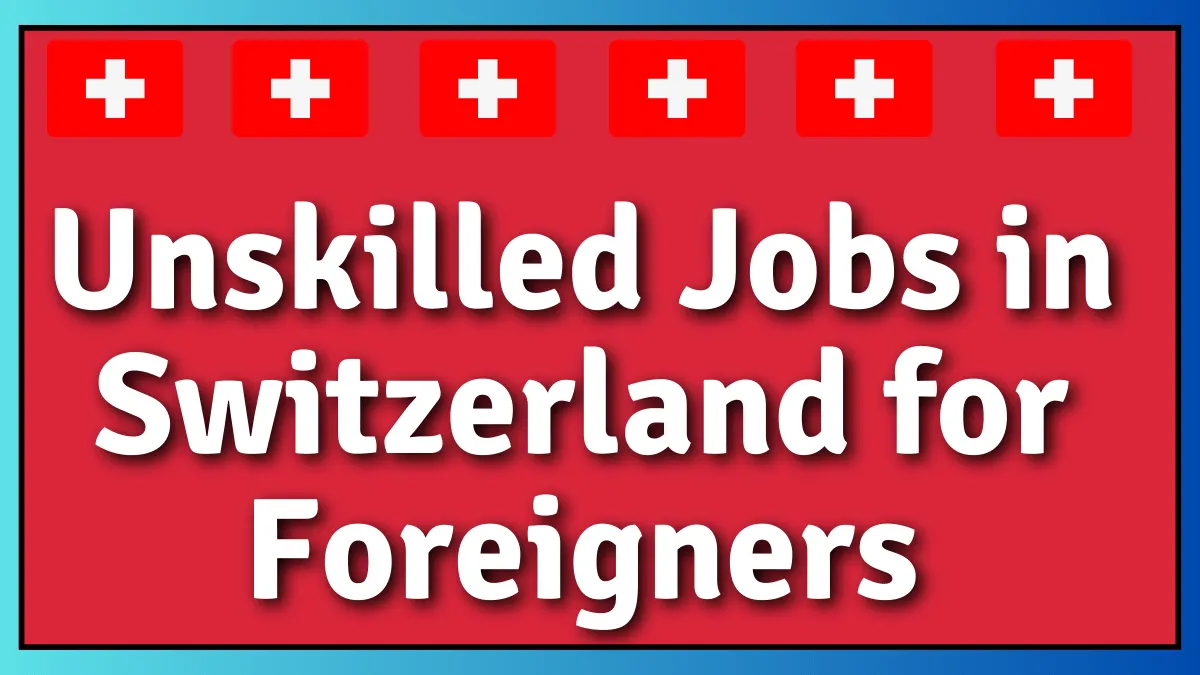If you’re a non-EU professional aiming to work in Europe, the EU Blue Card is one of the most attractive immigration routes. It offers legal residence and work rights in many EU countries, options for family reunification, and a pathway to permanent residency.
In 2025, the salary thresholds and eligibility rules for the Blue Card have been updated in many countries. You’ll need to know exactly how much income you need, what jobs qualify, and how the application works in each country.
In this guide, we’ll give you real salary figures, job sectors in demand, visa steps, pros & cons, and an actionable application checklist you can follow.
Blue Card in a Nutshell (with Salary Figures Upfront)
-
The EU Blue Card is a residence permit for highly qualified non-EU citizens in 25 of the 27 EU states (excluding Denmark and Ireland).
-
To qualify, you need a valid job offer or contract of at least 6 months in a highly qualified position.
-
A key requirement is meeting a minimum salary threshold, which is typically between 1× to 1.6× the average national salary, depending on country and whether your role is in a shortage sector.
-
For example, in Germany in 2025, the general threshold is €48,300 gross per year (≈ €4,025/month) for most occupations. For shortage occupations (IT, engineering, healthcare), the threshold is lowered to €43,759.80 per year.
-
In France, as of August 2025, gross annual pay must be at least €59,373 under the “Talent – European Union Blue Card” scheme.
-
In Belgium (Brussels), the salary requirement is among the highest: €66,377/year in 2025.
-
In contrast, in countries like Bulgaria, the threshold can be very low (just over €9,933/year), though these are exceptional cases.
So from the start: if your job offer doesn’t hit or exceed that country’s Blue Card salary threshold, you won’t qualify.
Job Roles and Sectors in Demand
Not every job qualifies. The Blue Card is meant for “highly qualified” roles. Here’s what to look for:
-
Academic / University graduates with degrees in STEM, business, medicine, finance, etc.
-
IT / Software / Computer Science roles – often considered shortage occupations, so they may benefit from lower salary thresholds.
-
Engineering (mechanical, electrical, civil, aerospace)
-
Healthcare & Medical Professions (doctors, specialized nursing)
-
Research, R&D, Data Science, AI, Machine Learning
-
Management / Executive roles in sectors like logistics, operations, supply chain
-
Architecture, Urban Planning, Transportation
-
Financial & Banking / Quantitative roles
If your job is regulated (e.g. medical profession, engineering in some countries), you may need local recognition or licensing in addition to your degree.
Also, many countries maintain a “shortage occupation list”. If your job is on that list, your salary threshold may be lower. For example, Germany allows a reduced threshold for shortage occupations and for new entrants into the labor market.
Salary & Region Comparisons
Here’s a table comparing sample Blue Card salary thresholds in different EU countries for 2025:
| Country / City | General Threshold (€/year) | Shortage / Reduced Threshold | Notes / Comments |
|---|---|---|---|
| Germany | €48,300 | €43,759.80 | Shortage or new graduates get reduced rate. |
| France | €59,373 | – | Under its “Talent – EU Blue Card” scheme. |
| Belgium (Brussels) | €66,377 | – | Among highest in EU for Blue Card. |
| Luxembourg | ~€63,408 | – | As per recent threshold revisions. |
| Netherlands | ~€68,000 | Some reduced figure | One of the highest thresholds in EU. |
| Bulgaria | ~€9,933 | – | Very low threshold in some exceptional cases. |
Cost of Living Note: In many of the higher threshold countries (Belgium, Netherlands, Luxembourg, France), cost of living is also steep — rent, utilities, transport, taxes are high. Always net out taxes, social security, and compare what you really take home.
So while a job in Brussels might offer you €66,000 gross, your real purchasing power may be less competitive compared to a €48,000 job in a lower-cost region.
Visa / Immigration Pathways: Step-by-Step
Here’s what you need to know about applying for a Blue Card, from start to finish.
1. Check Your Eligibility
You must:
-
Be a non-EU / non-EEA national
-
Have a binding job offer or employment contract for at least 6 months in the destination country
-
Show higher professional qualifications (generally a recognized university degree) — or in some countries, equivalent relevant experience (especially for IT roles)
-
Meet the salary threshold of that country
-
For regulated professions, fulfill licensing or recognition of your credentials
2. Prepare Documents
Common requirements (country by country variation):
-
Valid passport
-
Diploma(s) / proof of qualification (degree transcripts, certificates)
-
Job offer / employment contract including salary, responsibilities, duration
-
Proof of health insurance
-
Proof of accommodation or address
-
For regulated jobs: proof of licensing or recognition
-
Sometimes translated / legalized documents
3. Apply for a National Visa or Residence Permit
-
If you’re outside the country, you usually apply at the embassy / consulate of that EU country in your home country.
-
If you’re already legally in the country (e.g. on a temporary visa), you may apply in-country.
-
Submit documents, attend interview, get biometric data if required.
4. Wait for Decision (Up to 90 Days)
European and national rules usually mandate that you get a decision within 90 days.
5. Once Approved: Register, Get the Card
-
When you arrive, register your address (if required).
-
Authorities issue the Blue Card (often a biometric residence card).
-
The card is usually valid for up to 4 years, or for the duration of your contract + some extra months (if contract is shorter).
-
If your contract ends, you may have a 3-month (if < 2 years) or 6-month (if > 2 years) grace period to find a new job.
6. Mobility & Switching Countries
-
After 12 months in your first Member State, you can move to another EU country under simplified rules.
-
You must apply for a new Blue Card in the second country but you may not need to repeat labor market tests.
-
The time spent under Blue Card in different countries can count toward permanent residence.
7. Apply for Permanent Residency / Long-Term Residence
-
In many countries, after 5 years of legal residence you may apply for long-term EU residence or national permanent residency.
-
In some places (e.g. Germany), you can get a permanent settlement permit faster — after 21 or 33 months (if certain language & contribution conditions met).
Benefits & Challenges for Immigrants
Benefits
-
Mobility across EU states after 1 year — gives flexibility to shift jobs or locations.
-
Faster path to permanent residency compared to some other national visas.
-
Family reunification is easier — spouses and children can join you, and spouses often gain access to work immediately.
-
Equal treatment: you’re often entitled to the same working conditions, social benefits, training rights, as nationals.
-
Recognized across many countries — more stable than tying yourself solely to one national permit.
Challenges
-
High salary thresholds — many job offers won’t meet the required level.
-
Recognition / licensing issues — for regulated professions (e.g. medical, engineering) you might need local accreditation.
-
Cost of living & taxation in high-salary countries can erode your net income.
-
Bureaucracy / delays — document legalization, translation, processing times.
-
Job stability — your Blue Card depends on maintaining a qualifying job. If you become unemployed, you have limited time to find a new eligible job.
-
Language & integration — although not always required, local language helps for everyday life and smoother transitions.
-
Uncertainty in changing rules — countries adjust thresholds, policy interpretations can vary.
Step-by-Step Application Guide (Checklist You Can Follow)
Here’s a practical roadmap to apply for a Blue Card:
-
Choose target country: research its Blue Card rules, salary threshold, demand sectors.
-
Get a job offer: seek roles in demand sectors, ensure your gross salary offered meets or exceeds threshold.
-
Check your qualifications: your degree, transcripts, or work experience must match job. For regulated fields, check local recognition procedure.
-
Ask employer to confirm contract details: job title, duties, salary, duration (≥6 months).
-
Prepare documentation:
-
Passport
-
Academic Diplomas & Transcripts
-
Employment Contract
-
Proof of health insurance
-
Proof of address
-
Licensing / professional recognition (if needed)
-
Translations / legalization as required
-
-
Apply for visa/residence permit: at embassy/consulate if outside, or local immigration office if inside country.
-
Attend biometric/appointment: submit documents, give fingerprints/photos.
-
Wait for decision (up to 90 days)
-
Register on arrival: get address, local registration (if required)
-
Receive Blue Card: valid up to 4 years (or duration + buffer)
-
Comply with duties: inform authorities when you change employers (within first year in many countries), keep job qualifying.
-
Track your stay: after 12 months, consider moving to another EU country. After 5 years, prepare to apply for permanent residence.
-
If unemployment happens: find a new qualifying job within the grace period (3 or 6 months)
Use a checklist or spreadsheet to track each requirement, deadline, and correspondence with employer / immigration authorities.
Country Example: Germany Case Study
Let’s go deeper into Germany (one of the most popular destinations).
-
In 2025, general threshold: €48,300 per year.
-
For shortage occupations, new entrants, or IT specialists: €43,759.80 per year.
-
The job contract must be for at least 6 months.
-
Processing time: up to 90 days.
-
Validity: up to 4 years, or duration of contract + 3 months if shorter.
-
Permanent residence: you can apply for a settlement permit after 21 months (if you have B1 level German) or after 33 months (with basic language) — for Blue Card holders.
This makes Germany one of the most structured and favorable systems for Blue Card holders.
Motivating Your Move — Conclusion
If you’re targeting Europe long-term, the EU Blue Card is one of your strongest tools. It ensures legal work and residency, offers mobility across member states, and often fast-tracks your route to permanent settlement.
But to succeed, you need to be strategic: pick the right country, secure a job that meets the salary threshold, prepare your documents carefully, and stay on top of timing.


